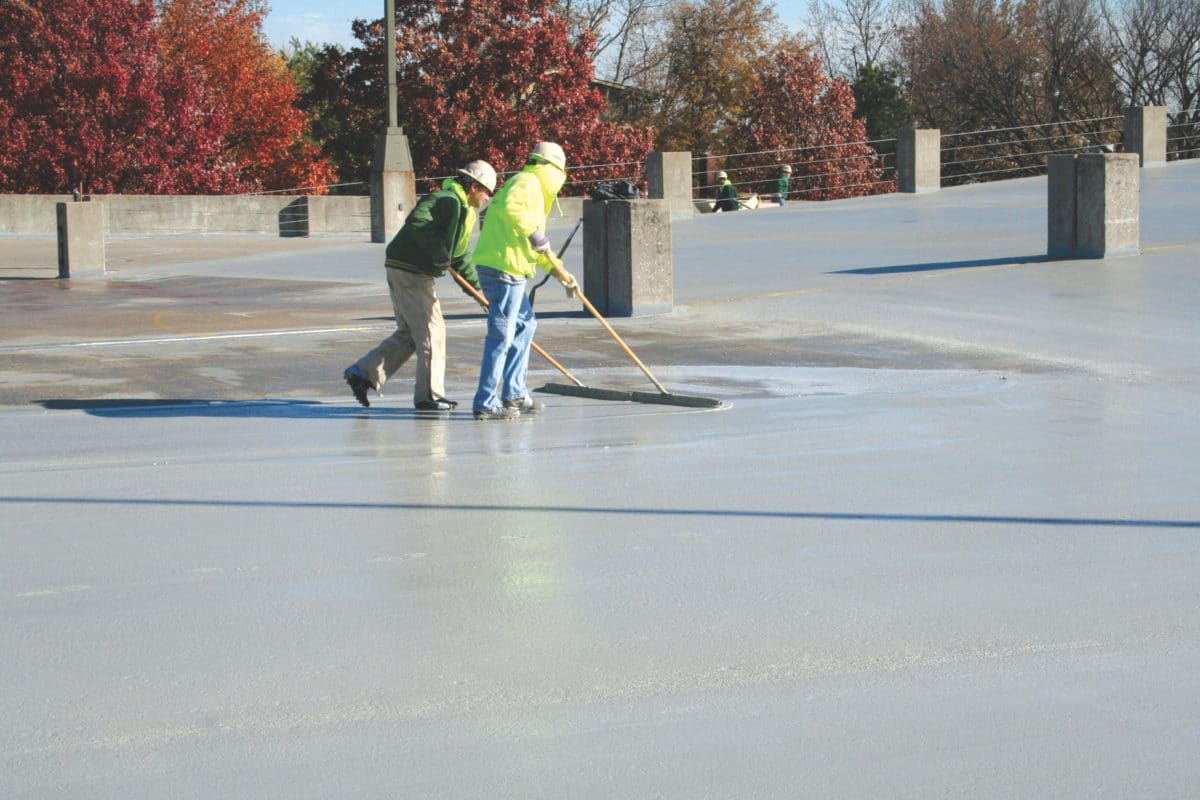Story at a glance:
- There are many different types of traffic coatings. Among them, polyurethane/epoxy coatings are becoming increasingly popular.
- NeverFade coatings with Kynar Aquatec both restore and protect the exteriors of buildings.
- Solar reflective coatings can both prolong a deck’s life and cool surfaces.
Buildings and other projects often make use of coatings to maintain and protect the structures or surfaces long after they’re completed. Some coatings serve to provide waterproofing and concrete surface protection.
Each coating type has its own intended use that is important on some applications more than others. Some structures demand a coating that sets quickly while others care more about durability or waterproofing.
“It’s important that the coating type you choose is meeting your intention and your requirements,” said Mosby Lawrence, waterproofing manager at NEOGARD, in a previous interview with gb&d.
These are six different types of coatings that may benefit your next project.
1. Traffic Coatings
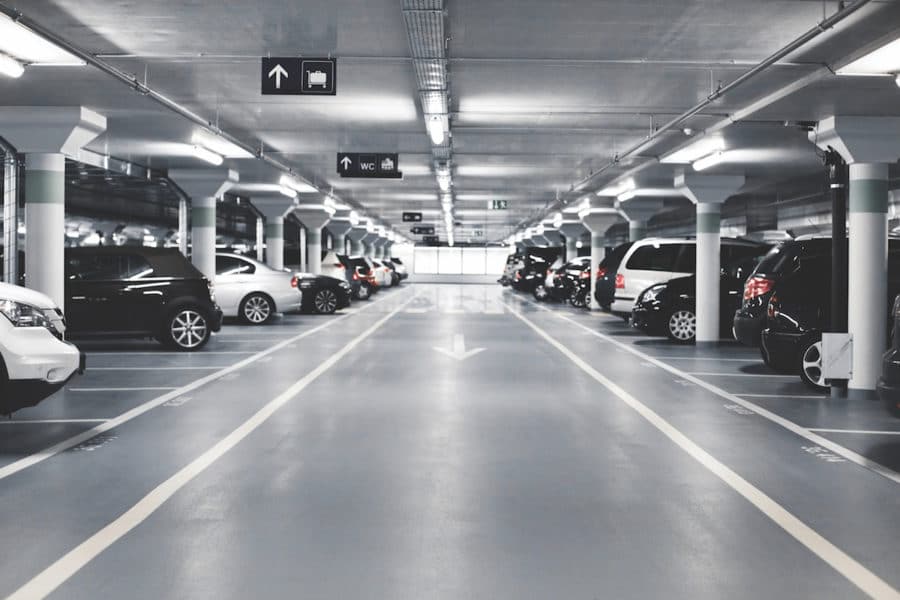
NEOGARD’s products have been used in projects around the world by leading architects and engineers. Photo courtesy of NEOGARD
Traffic coatings, as the name implies, work best on structures that are subject to constant traffic. They come in many different types based on what they’re made from and their use.
Polyurethane systems have been used as a sustainable option for filling in cracks and waterproofing things like apartment building garages since the 1970s. “Clients can spend a great deal of money for traffic systems, but they are sustainable and meet strict VOC standards. If a client maintains them, you can simple re-apply the coating over it, so there is no need to replace them,” Lawrence previously told gb&d.
Epoxy broadcast systems have been used for decades as an affordable, easy to apply option with concrete surface protection and enhanced durability for ramps, bridge decks, and parking garages.
Lawrence said hybrid systems, especially polyurethane/epoxy, are becoming more popular as another of the top types of coatings. Their durability makes them a great option for high-volume, heavy traffic parking garages. “Even if you don’t want to use hybrid throughout the whole garage, you can use it in high wear areas such as ramps, exits, entrances, and turning areas,” Lawrence said. “This will increase the durability of the entire system.”
For projects that require quick installation and turnaround, Lawrence said it’s best to go with a poly-methyl methacrylate, or PMMA, system. This type of traffic coating’s chemistry allows it to have a fast turnaround time, meaning applications can start and end within hours of the same day.
For a coating that has high permeability, is easy to apply, and produces no harmful odors, consider a latex/vinyl copolymer system of coating. This is best used on concrete surfaces with a metal pan deck underneath.
2. Solar Reflective Coatings
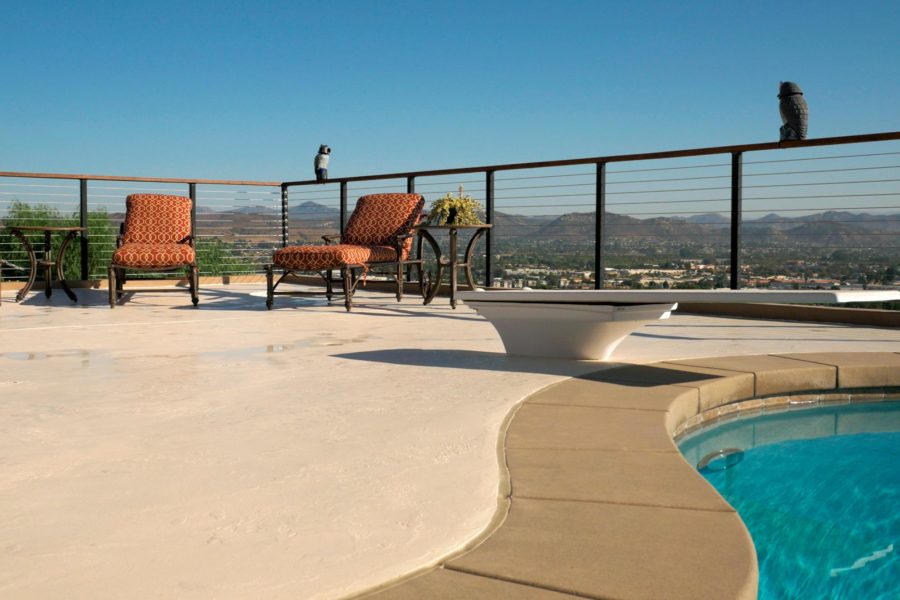
Westcoat’s solar reflective Texture-Crete top coat can be applied over both solar reflective and non-solar reflective systems. It can also bond to concrete walkways and pool decks without waterproofing systems. Photo courtesy of Westcoat
Solar reflective coatings can be very impactful in urban areas that have little to no shade from the sun.
Coatings like Westcoat’s solar reflective Texture-Crete top coat can be applied over both solar reflective and non-solar reflective systems. It can also bond to concrete walkways and pool decks without waterproofing systems.
This coating is used on buildings and sidewalks to try to decrease the amount of heat that is absorbed and re-emitted. Solar reflective coatings also lower energy costs and reduce the amount of air pollution in urban areas by reducing the need for air conditioning. This type of coating complies with the Cool Roof Rating Council’s standards for solar reflective roofs and walls, including a certain thermal emittance and Solar Reflective Index.
Solar reflective systems can be applied to existing surfaces and structures. The installation process uses multiple layers of both dark and white cement to adhere to and protect existing structures. This also helps to prolong deck life by preventing deterioration from harmful UV rays and by waterproofing its surfaces.
San Diego-based Westcoat has years of experience in creating sustainable types of coatings. “We are no stranger to sustainability and energy efficiency initiatives,” said Mallory Cabading in a previous article for gb&d. “With the addition of the solar reflective series, we can provide a California Title 24, Cool Roof Rated waterproof deck coating solution.”
3. Restoration Coatings

The Historic Federal Aviation Administration’s West Coast Headquarters was fully protected using NeverFade Metal Restoration Coatings system from APV Engineered Coatings. Photo courtesy of Stuart Dean Company
Restoration coatings are meant to give new life to older structures. NeverFade from APV Engineered Coatings is great for restoring the appearances of buildings affected by time and weathering. This water-based resin is usable on a wide variety of substrates and is extremely durable with a 20-year guarantee from APV.
APV’s NeverFade with Kynar Aquatec coatings can be applied by brush or roller (as opposed to the traditional practice of spray application), according to Todd Gomberg, a second-generation principal at Capital Contractor Services and a regional NeverFade® certified applicator.
One prominent example of NeverFade in use is the former West Coast Headquarters for the Federal Aviation Administration, described as one of the nation’s most significant examples of 1970s late modernism by the LA Conservancy. NeverFade was used on this project because the water-based polyvinylidene fluoride resin can be used on a variety of substrates, is extremely weather-resistant, and has low odor emissions.
4. Weather Coatings

Lead architect John Pistorino used APV NeverFade on the “Sandcastle” to help the house stand up to hurricanes. Photo courtesy of APV Engineered Coatings
Some coatings are needed to face the toughest weather, including hurricanes. “It can be difficult to find an exterior coating that stands up to high humidity, extreme UV rays, and the corrosive power of salt spray for more than five years without fading,” said Michael Roberts of Lazer Distribution in a previous article for gb&d. “NeverFade Coatings with Kynar Aquatec has demonstrated 15 years of performance [on our Sandcastle project] in South Florida with no fading and chalking. I knew the product would be a perfect fit for the Sandcastle.”
Kynar Aquatec is a water-based resin that is ideal for air-dry, field-applied types of coatings. The premium, weather-resistant coating can be easily applied to a variety of substrates—including metals, plastics, wood, concrete, stucco, EIFS, and previously painted surfaces.
“The use of Kynar Aquatec and complex inorganic pigments gives NeverFade the ability to resist film erosion, chalking and fading caused by harsh UV exposure,” Erin Neff, director of marketing and business development, APV Engineered Coatings, previously told gb&d. “Degraded and faded paint is so commonly seen throughout Florida, which is one of the harshest environments in the country.”
5. PVDF Coatings
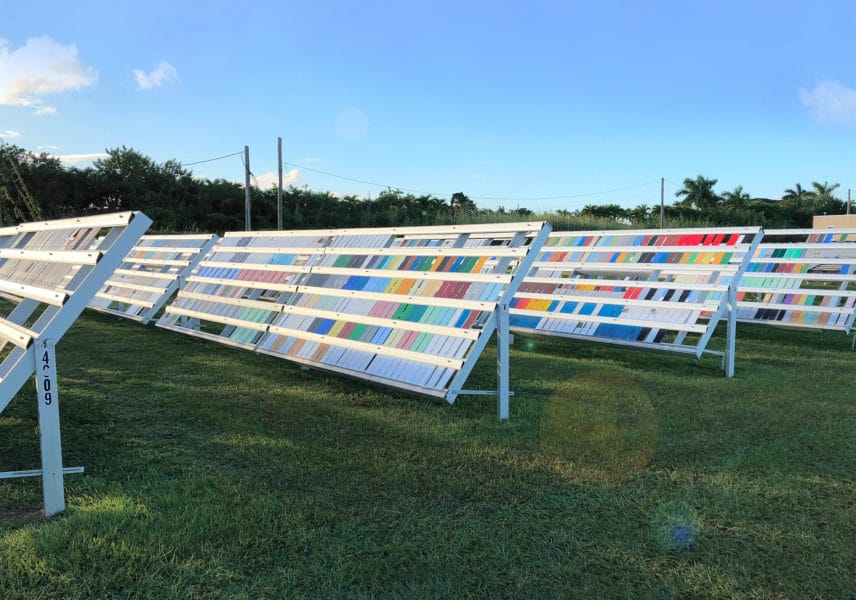
Photo courtesy of APV Engineered Coatings
Polyvinylidene fluoride, or PVDF, has been around for more than 50 years. This type of thermoplastic polymer works to restore and protect the exteriors of structures. Before application, it goes through years of testing to verify adhesion, abrasion, hardness, impact resistance, and mold and mildew growth, while also being tested with UV light exposure and humidity to identify color change, gloss retention, and chalking.
NeverFade coatings from APV Engineered Coatings come in two main topcoat formulations that incorporate Kynar Aquatec®—the high-performance PVDF polymer engineered by Arkema. Compared to urethanes and acrylics, Kynar® PVDF is in a class by itself. Outstanding characteristics include extreme resistance as well as easy application with industry-standard spray equipment, and adhesion to many different surfaces, among other benefits.
Besides having the same outstanding weatherability and durability characteristics of types of coatings with Arkema’s original factory-applied grade, Kynar 500, its versatility is unparalleled. And thanks to uncommonly low VOCs, NeverFade can easily be field-applied in states with even the harshest environmental regulations.
6. HVAC Coatings
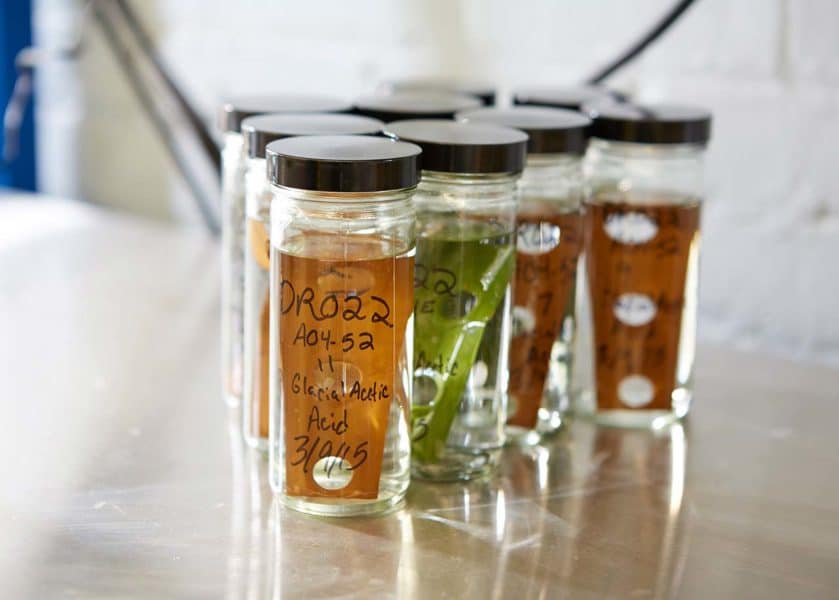
Heresite tests its coatings in all environments, incorporating elements like humidity, UV, and chemical resistance. Photo courtesy of Heresite Protective Coatings
HVAC coatings are often used with HVAC condensers and evaporator coils. Using HVAC coatings allows you to protect equipment from the toughest environments and extend equipment life.
Heresite Protective Coatings has multiple offerings of HVAC coatings, including the P-413 and the ES-600. The P-413 is mainly used for coil and radiator heat exchangers, while the ES-600 can be used as a standalone for coils, cabinets, and components or alongside the P-413 for a “full immersion” coil coating on components that cannot be over-cured.
Heresite tests its HVAC coatings in environments close or next to marine environments. “A lot of the world’s population lives in these coastal environments, and this brings industry in close proximity as well,” said PeterHellman, president of Heresite Protective Coatings, in a previous article for gb&d. “It is these environments that dictate our testing protocols, using cyclic versus static testing and incorporating multivariate elements like humidity, UV, and chemical resistance.”

